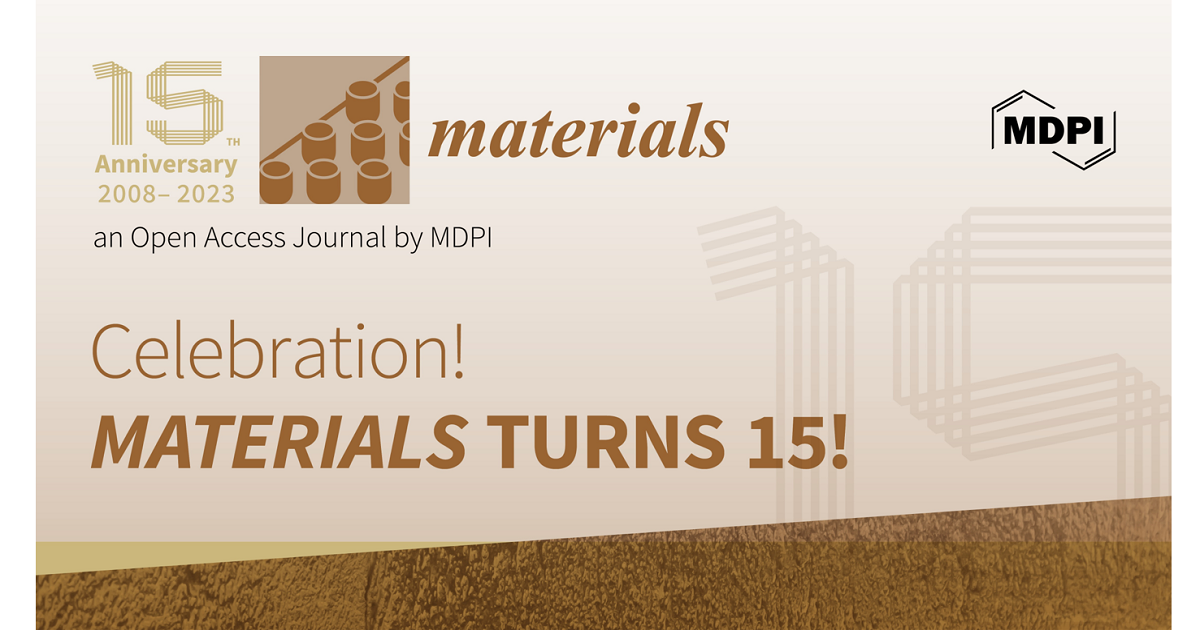The 15th Anniversary of Materials—Recent Advances in Materials Chemistry
A special issue of Materials (ISSN 1996-1944). This special issue belongs to the section "Materials Chemistry".
Deadline for manuscript submissions: closed (10 August 2024) | Viewed by 45986

Special Issue Editor
Interests: supramolecular chemistry; interfacial science; thin films; molecular recognition; nanoarchitectonics
Special Issues, Collections and Topics in MDPI journals
Special Issue Information
Dear Colleagues,
Launched in 2008, Materials has provided readers with high-quality content edited by active researchers in material science for 15 years through sustainable open access and outstanding editorial service. Today, its published papers receive more than 1,500,000 views per month, with readers in more than 150 countries and regions.
In these 15 years, materials chemistry has continuously progressed, especially with the advanced controls of their nanostructures, In addition to traditional chemical fields, such as organic chemistry, inorganic chemistry, polymer chemistry, coordination chemistry, supramolecular chemistry, interfacial chemistry, materials chemistry, and biochemistry, and new emerging fields, such as nanotechnology, nanoarchitectonics, and materials informatic, have come to provide great contributions in the developments of functional materials. These advances have been able to solve various social problems in energy, environmental, and biomedical issues. Thus, the development of material chemistry could actually save our planet. From this global perspective, we would like to collect papers from a wide range of topics within material chemistry from all over the world to be compiled in a Special Issue titled “Recent Advances in Materials Chemistry”.
Prof. Dr. Katsuhiko Ariga
Guest Editor
Manuscript Submission Information
Manuscripts should be submitted online at www.mdpi.com by registering and logging in to this website. Once you are registered, click here to go to the submission form. Manuscripts can be submitted until the deadline. All submissions that pass pre-check are peer-reviewed. Accepted papers will be published continuously in the journal (as soon as accepted) and will be listed together on the special issue website. Research articles, review articles as well as short communications are invited. For planned papers, a title and short abstract (about 100 words) can be sent to the Editorial Office for announcement on this website.
Submitted manuscripts should not have been published previously, nor be under consideration for publication elsewhere (except conference proceedings papers). All manuscripts are thoroughly refereed through a single-blind peer-review process. A guide for authors and other relevant information for submission of manuscripts is available on the Instructions for Authors page. Materials is an international peer-reviewed open access semimonthly journal published by MDPI.
Please visit the Instructions for Authors page before submitting a manuscript. The Article Processing Charge (APC) for publication in this open access journal is 2600 CHF (Swiss Francs). Submitted papers should be well formatted and use good English. Authors may use MDPI's English editing service prior to publication or during author revisions.
Keywords
- advanced materials
- biomedical
- energy
- environment
- nanoarchitectonics
- nanomaterials
- nanotechnology
- supramolecular chemistry
Benefits of Publishing in a Special Issue
- Ease of navigation: Grouping papers by topic helps scholars navigate broad scope journals more efficiently.
- Greater discoverability: Special Issues support the reach and impact of scientific research. Articles in Special Issues are more discoverable and cited more frequently.
- Expansion of research network: Special Issues facilitate connections among authors, fostering scientific collaborations.
- External promotion: Articles in Special Issues are often promoted through the journal's social media, increasing their visibility.
- Reprint: MDPI Books provides the opportunity to republish successful Special Issues in book format, both online and in print.
Further information on MDPI's Special Issue policies can be found here.






